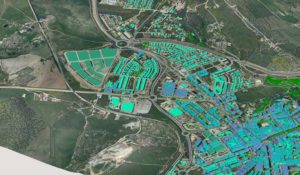With the modern advancement in technology, geolocation technology has now become a mandatory entry-level technology to be studied. Learning GIS (Geographic Information System) can prove to be quite intimidating for beginners.
If you are a beginner learning about GIS, we’ve got your back. This article discusses the 10 best GIS books for beginners. The 10 books discussed below have been reviewed and proven to be very helpful in teaching beginners. Read along and find out what books will improve your GIS skills in no time;
1.) Getting To Know ArcGIS
This is the most recommended book for beginners who don’t know where to start. The Getting To Know ArcGIS book is very large, having more than 700 pages of useful and training information. Furthermore, this book contains many exercise activities. These multiple exercise activities are designed to help a beginner get a deeper understanding of what ArcGIS entails as well as the GIS geo-data system.
The Getting To Know ArcGIS book can also be used as a reference guidebook. The exercise activities included in the book are helpful to all beginners, whether developers or data analysts.
2.) GIS for Biologists
The GIS for Biologists book is best suited for undergraduate students and other users of the novice biological GIS. It mainly teaches the use and application of GIS in research conducted in the biological field. The book introduced this information to beginners in a very practical and user-friendly manner. It is very easy and simple to use by beginners.
This GIS book is different from other GIS books. Other GIS books provide direct introductory information about the GIS. On the contrary, the GIS For Biologists book presents its information in a biological context.
3.) GIS Tutorial 1 for ArcGIS Pro
This GIS book is designed for those beginners who have just started learning about ArcGIS Pro. The ArcGIS Pro is a premium and professional GIS application meant for use on desktops. The GIS Tutorial 1 for ArcGIS Pro book contains a piece of detailed introductory information that best introduces beginners to the ArcGIS world.
This book also contains well-researched exercises. These exercises make use of ArcGIS application features to teach the learners about the updated GIS technology aspects. These include making maps, creating and analyzing geospatial data as well as managing systems using GIS. Also, the exercises make use of the ArcGIS Pro and ArcGIS Online. This book is, hence, very ideal for beginners.
4.) GIS Tutorial 1
This is the top-selling GIS book for beginners. It introduces information about using ArcGIS 10.3.x designed for desktops. It, also, teaches the different GIS tools and their uses, such as; collecting datasets, running geospatial tools as well as designing querying interactive maps.
The GIS Tutorial 1 book also consists of practical exercises, assignments, and sections referred to as “Your Turn.” These are very helpful in teaching GIS in the classrooms.
5.) An Introduction to Using GIS In Marine Biology
This book has been written in several volumes and editions. Each of these volumes compliments the information found in the previous volume editions. It mainly teaches the use of GIS in the Marine biology field.
At most times, these book volumes teach best when used alongside each other, as compared to when used independently. It has plenty of practical exercises for teaching Marine biology learners. It is, however, recommended that higher volumes of this book be used by beginners who already have some basic knowledge of marine biology.
6.) Mapping and Modeling Weather and Climate with GIS
This book has been written by several experts who have specializations in fields such as climatology, and meteorology, among others. It has a total of 23 chapters. The chapters provide lessons on advancing research in atmospheric science. They focus on chapters such as geospatial cartographic aspects and their analysis.
Mapping and Modeling Weather and Climate with GIS book consist of both theory and practical on mapping and modeling of weather and climate projects. Therefore, this GIS book is best designed for those beginners majoring in weather and climate.
7.) Discovering GIS and ArcGIS
This GIS book provides detailed information to beginners on how to use GIS as well as why to use the system. It, therefore, can help learners relate the theoretical part of GIS with the practical ArcGIS skills. A beginner studying this book will be able to perform many practical tasks, at the same time understanding the theoretical and practical part of what he or she is doing.
8.) The Quantum GIS Training Manual
This GIS book provides detailed and user-friendly beginner information to learners; detailed information to make the learners experts in no time. It has been written by experts with many years of experience in the GIS field. It mainly focuses on training beginners about the free desktop mapping tool as well as GIS tools.
The Quantum GIS Training Manual GIS book has a very good structure. It starts with a practical example of datasets, which help beginners handle the exercises well and understand the concepts explained. It can be used for both individual learning as well as for classroom settings.
9.) Business Site Selection, Location Analysis, and GIS
This GIS book incorporates both location science information and information on how to model using GIS. It teaches beginners how to find the optimal sites by making use of the updated approach to the selection of sites.
The Business Site Selection, Location Analysis, and GIS book, also, provide in-depth information on practical solutions for practical life problems. Other lessons included in this book teach the beginners aspects such as how to increase their productivity and efficiency, how to produce high-quality data, develop the best strategies so as to achieve practical solutions as well as produce better models.
10.) GIS Fundamentals
The GIS Fundamentals book provides beginners with theoretical and practical knowledge of GIS. It is best suited for first-year GIS beginners. It can also be used as a reference guidebook for GIS practitioners.
It covers topics such as how to enter geospatial data, how to maintain geospatial data as well to analyze collected geospatial data.
Conclusion
Are you a beginner struggling with the GIS course? The above GIS books will help you get started on the right path. Purchase one of these GIS books and enjoy the best GIS course experience ever!



